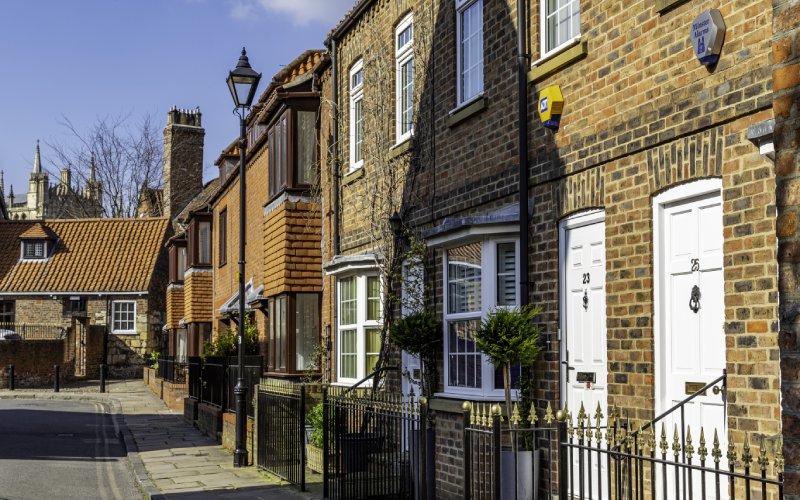Ever looked around your home and thought “we need more space”?
You’re not alone.
With UK house prices making moving expensive and more of us working from home, extending your house makes good financial sense. But many homeowners aren’t sure about the best way to pay for it.
Whether you need an extra bedroom, want to create a home office, or dream of a larger kitchen, several financing options could work for you.
Let’s look at how you can fund your extension plans.
Your Main Finance Options
Before you speak with builders or draw up plans, you need to have an idea about how you’ll pay for your extension.
Most homeowners choose between four main finance options, each with its own benefits and considerations. These allow you to borrow a lump sum and then pay it back each month over a number of years.
The right choice will depend on your current mortgage terms, how much equity you have, and your overall financial situation.
Let’s break down each option so you can see what might work best for you:
Remortgaging
Remortgaging means taking out a new, larger mortgage to release money for your extension.
It often offers the lowest interest rates and lets you spread payments over a longer period. However, you might face early repayment charges on your current mortgage, and you’re borrowing money for longer.
Further Advance
Additional borrowing from your current lender (also called a further advance or home improvement loan) keeps things simple as you’re dealing with one lender.
The process is much quicker than remortgaging, and the interest rates are normally competitive.
Secured Loans
Secured loans and second charge mortgages let you keep your existing mortgage while taking out a separate loan against your property to pay for your extension.
They’re an alternative to getting a further advance and are worth considering if you’ve got a great rate on your current mortgage or your circumstances have changed. The interest rates will be higher than a standard mortgage.
Unsecured Loans
Unsecured personal loans suit smaller extensions as they’re quick to arrange and don’t need your property as security. However, you’ll usually pay more in interest and have less time to repay compared to mortgage options.
Remortgaging to Fund Your Extension
When you remortgage for an extension, you’re replacing your current mortgage with a new, larger one.
This is called capital raising and the extra money funds your building work. You’ll need sufficient equity in your property – that’s the difference between its value and what you owe on your mortgage.
For example, if your home’s worth £500,000 and your mortgage is £200,000, you’ve got £300,000 in equity that you can borrow against. Most lenders will let you borrow up to 90% of your property’s value, sometimes more.
Remortgaging works well when:
- You’ve built up good equity in your home
- Interest rates are favourable
- Your current mortgage deal is ending soon
- You want lower monthly payments by spreading the cost
PROS
You get to borrow all of the money at a competitive interest rate, with one mortgage repayment each month. By going with a new lender you could choose a mortgage that has more flexible options or an offset facility. You could also take the opportunity to add someone new to the mortgage, like a new partner.
CONS
You’ll need to apply for a new mortgage, with the normal mortgage fees and paperwork. The lender will check your credit, your income and your affordability. This will be expensive if you also need to pay early repayment charges to your current lender. You might be giving up a really good interest rate deal.
Understanding Further Advances
A further advance is simple – it’s extra money borrowed from your current mortgage lender.
You keep your existing mortgage exactly as it is and add a separate loan on top. The amount you can borrow depends on your equity, income and the lender’s criteria.
Here’s a quick example:
Say you’ve got a £200,000 mortgage and need £100,000 for your extension. Instead of remortgaging for £300,000, you keep your existing £200,000 mortgage and add the £100,000 as a separate home improvement loan.
High street lenders like Halifax offer additional borrowing to existing customers once they’ve had their mortgage for six months or more.
They look at your payment history and current finances before deciding. Each lender sets their own rules. Some offer better rates specifically for home improvements compared to other types of borrowing. Others might want to see detailed plans and quotes before lending.
To qualify for additional borrowing, you’ll typically need:
- Good mortgage payment history
- Enough equity in your property
- Income to cover the extra payments
- Quotes for the building work
PROS
You just have one lender to deal with. There’s the minimum amount of fees and it’s quick to arrange. Most further advances will have their own term, separate to the main mortgage, with a new interest rate.
CONS
You will have two mortgage payments to budget for and the new loan may not have the most competitive interest rate. The lender will still check your credit, your income and your affordability.
Second Charge Mortgages
A second charge mortgage is an additional loan secured on your property, sitting alongside your main mortgage. Think of it like having two mortgages running at once – your original mortgage stays exactly as it is.
It is very similar to getting a home improvement loan, except you borrow the extra money from a new lender.
This option particularly helps when you want to keep your existing mortgage rate. Maybe you secured a really low rate a while ago, or perhaps your circumstances have changed making remortgaging less attractive (or less possible).
Second charge mortgages make sense in specific situations.
Perhaps you’re self-employed now but have an excellent mortgage rate from when you were employed. Or maybe your credit score has changed slightly. In these cases, keeping your first mortgage and adding a second charge could save you money.
The application looks at both your current mortgage payments and your ability to pay the new loan.
PROS
A second charge mortgage allows you to borrow more even though your current lender won’t oblige. It also allows you to avoid having to pay any ERCs. It’s convenient for borrowers who have picked up some poor credit, or recently changed jobs.
CONS
The main disadvantage is that the interest rate will be higher than a ‘main’ mortgage or further advance. You will have to pay an arrangement fee and your current mortgage lender has to approve the second charge on your home.

Other Ways to Pay for Your Extension
Personal Loans
For smaller extensions costing £25,000 or less, unsecured personal loans offer a straightforward option. They’re quick to arrange and don’t put your property at risk. The downside? Higher interest rates than mortgage-based options, and you’ll usually need to repay the money within 5-7 years.
Bridging Loans
I’m putting bridging loans in just for completeness, they wouldn’t be a first choice option. However, they are quick to arrange. If you are in need of money in a hurry, perhaps to pay for urgent work, or to ensure a builder can start quickly, they can be very useful. You can raise money on your own home, or other properties you might have, such as buy to lets or commercial units.
Using Your Own Money
Funding your extension with savings means no interest payments or applications. But keep enough aside for emergencies. Many homeowners combine some savings with borrowing to reduce their loan amount.
Get access to expert brokers and over 100 lenders
Making Your Plans Work
Builder quotes only tell part of the story. Your budget needs to cover:
- Building costs
- Professional fees for architects and surveyors
- Planning permission
- Building regulations
- Finance costs and arrangement fees
Add 10-15% extra to cover unexpected issues – they’re common in extension projects.
Getting Your Quotes Right
Don’t just go with the cheapest quote. Look for detailed breakdowns that specify exactly what’s included. A good quote covers materials, labour, and timelines.
Ask each builder the same questions:
- How long will it take?
- What might cause extra costs?
- What happens if there are delays?
Some builders offer phased payment plans, which can help with cashflow. This might affect which type of finance suits you best.
Planning for the Unexpected
Even the best-planned projects can hit snags. Building materials might cost more than expected, or the work might uncover issues that need fixing. Having a financial buffer means you won’t need to compromise on quality if surprises crop up.
Timing
Any type of borrowing takes time to arrange. This may affect which option you go for, especially if you’ve let it until the last minute…
Read more: www.fmb.org.uk/house-extensions-the-ultimate-guide
Working with a Mortgage Broker
A mortgage broker looks at your complete financial picture.
They know which lenders specialise in extension finance or capital raising mortgages and often access deals you won’t find directly. Some lenders work only through brokers, offering special rates for home improvements.
Brokers also help you avoid pitfalls.
They’ll check for things like early repayment charges on your current mortgage and help you time your application right.
You definitely want to avoid making an application that is then declined, this shows on your credit file and will lower your credit score. Brokers will always aim to get a loan application approved, first time.
Read more: What does a mortgage broker do?
Choosing Your Builder
Your choice of builder affects both your finance options and the project’s success. Good builders should:
- Show you similar projects they’ve completed
- Provide references you can check
- Have proper insurance
- Belong to recognised trade bodies
Don’t be pressured into making a decision, do it in your own time.
Read more: www.fmb.org.uk/how-to-choose-a-builder
Legal Requirements
Most extensions need building regulations approval, and many require planning permission. Some lenders want to see these in place before releasing funds.
You might also need:
- An architect or designer’s plans
- A structural engineer’s calculations
- A party wall agreement if you’re building near boundaries
Before the work starts it’s also worth having a chat with your home insurance company to tell them what’s happening.
Read more: www.fmb.org.uk/building-regulations-what-you-need-to-know
Refinancing Afterwards
If you end up financing the extension from various places and lenders, there may be a need to tidy things up afterwards.
The good news here is that your property is probably worth a bit more now.
If the monthly commitments are higher than you planned for, or a loan you desperately needed now seems really expensive, you could look at ways to consolidate these debts.
To move them over to a more competitive interest rate, or to a more affordable term.
This is called debt consolidation.
Read more: What does debt consolidation mean?
Ready to Start?
Begin by working out roughly how much you need to borrow.
Check your current mortgage terms and gather initial builder quotes. Speaking with a mortgage broker early helps you understand all your options before you commit.
Every extension project differs, just like every homeowner’s financial situation. What worked for someone else might not suit you. That’s why getting expert advice makes such a difference.
Want to explore your extension finance options?
Give us a call. We will match you to an experienced broker who will look at your situation and explain your choices clearly.
They will help you find the most cost-effective way to fund your extension.
Frequently Asked Questions
Usually yes, but of course there’s no guarantee.
A well-planned extension typically adds 5-15% to your property value, depending on type, quality and location.
Not always, but having permission can help your application. Some lenders want to see permissions before releasing funds.
What you want to avoid is paying fees to get your finance in place, only to have your planning application denied.
Typically 2-6 weeks for remortgaging, 1-3 weeks for additional borrowing, and 1-2 weeks for personal loans.
Usually up to 90% of your property’s value minus your current mortgage, subject to affordability checks.
Yes, if borrowing more. The increase depends on amount borrowed, term length and interest rate.
If you remortgage and extend the term then your payments may well stay broadly the same.
Sometimes, through specialist lenders, but expect higher rates. Recent issues have more impact than older ones.
This is one reason that borrowers choose a secured loan over a remortgage or further advance, as the second charge lenders are more lenient on credit issues.
Yes, the same options will be available to you if you want to extend up in to the loft space.
Read more: How to Finance a Loft Conversion


